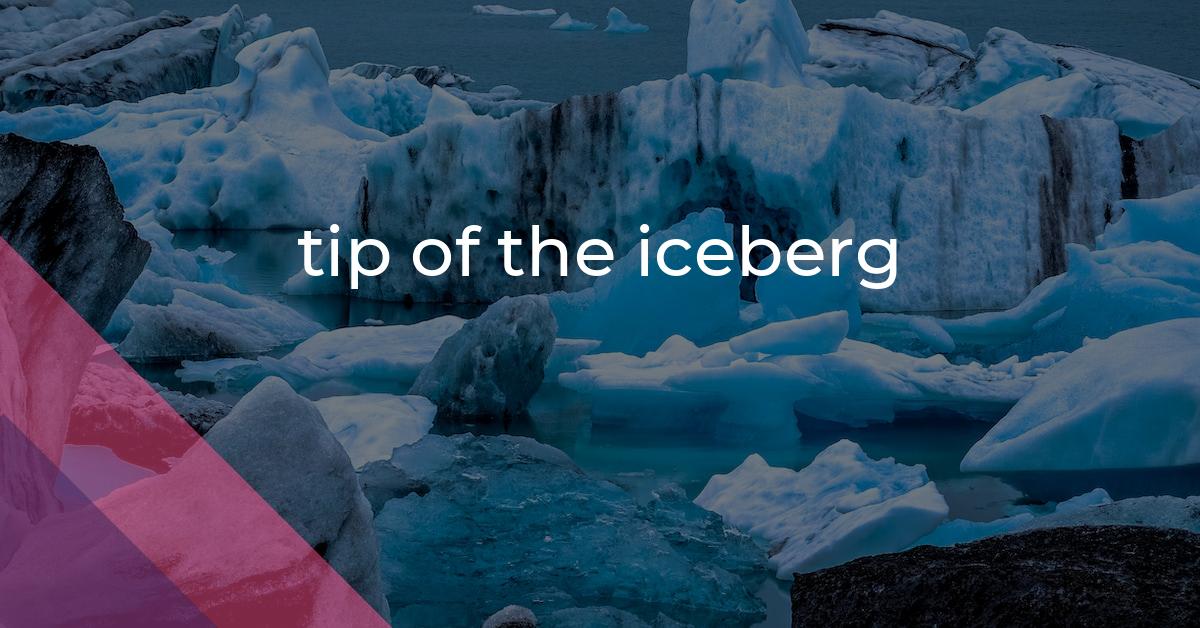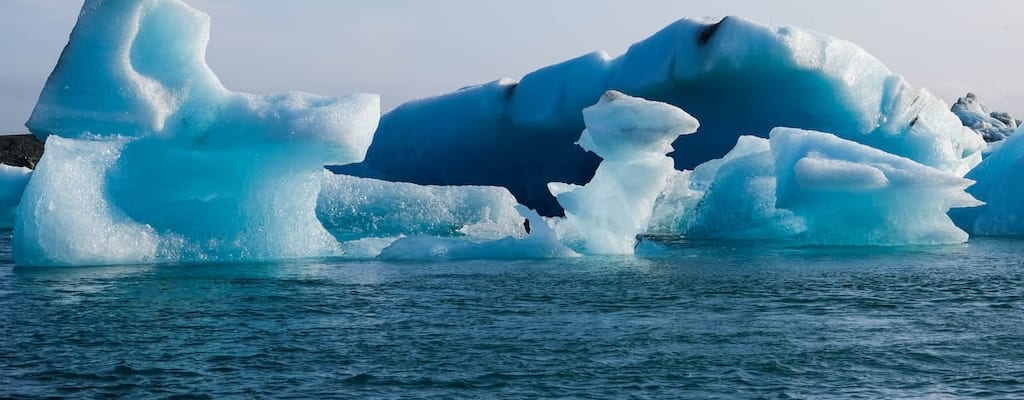tip of the iceberg: Idiom Meaning and Origin
What does ‘tip of the iceberg’ mean?
The idiom tip of the iceberg refers to a situation where the visible or known part of something is just a small indication of a much larger, complex, or problematic issue that remains unseen or hidden.

Idiom Explorer
The idiom "tip the scales" means to have a decisive or significant influence on a situation or outcome, often by providing an advantage or causing a change in balance.
The idiom "tip one's hat" means to show respect or admiration towards someone or something. It is a gesture that originated from men tipping their hats as a sign of courtesy or acknowledgement.
The idiom "tip of the hat" is a gesture of recognition or acknowledgement usually used to show respect or appreciation towards someone or something.
The idiom "thin end of the wedge" refers to a small, seemingly insignificant action or event that can lead to more significant and undesirable consequences in the future. It symbolizes the start of a negative or unwanted situation that may escalate over time.
The idiom "the half of it" means that something is incomplete or lacking important information. It suggests that there is more to a situation than what is currently known or stated.
An idiom widely used to refer to something insignificant or unimportant. It implies that the mentioned object or amount is of little value or significance.
The idiom "shallow end" refers to a situation or position where someone lacks depth or expertise in a particular area. It suggests that the person is only able to understand or engage with the surface-level aspects of a topic or situation.
The idiom "scratch the surface" means to only uncover or reveal a small part or a superficial level of something, without fully understanding or exploring its depth or complexity.
The idiom "peel the onion" means to uncover or reveal each layer or aspect of a complex issue or problem, gradually revealing more information or understanding.
The idiom "on the face of it" means that something appears to be true or valid based on initial evidence or appearance, but further examination may reveal a different reality or truth.
Unveiling the Depths
The idiom "tip of the iceberg" is a commonly used phrase in the English language. It is often used to describe a situation or problem where there is more than meets the eye. The tip of the iceberg is just a small indication of a much larger, hidden or unknown issue. The phrase originates from the idea that only a small portion of an iceberg can be seen above the water, while a larger portion remains submerged below the surface.
The concept of the "tip of the iceberg" was popularized by the publication of the book "The Loss of the Titanic" in 1912. The author, Lawrence Beesley, describes how the visible portion of the iceberg that sank the Titanic was just the tip while the much larger mass lay hidden beneath the water. This metaphorical expression signifies that there is more to a situation or problem than initially meets the eye.
The idiom "tip of the iceberg" is often used to illustrate the idea of scratching the surface. When we scratch the surface of a situation or problem, we only uncover a small part of the whole. It implies that there is much more beneath the surface that we need to explore. This concept aligns with the idiom "scratch the surface," which means to delve deeper into a subject or issue to uncover additional information or hidden complexities.
When we apply this idea to the idiom "tip of the iceberg," we can understand that the visible signs or symptoms of a situation hint at a deeper underlying issue. It suggests that there is more to be discovered and understood beyond the initial observations. Just like scratching the surface, the tip of the iceberg only reveals a small portion of the whole, leaving much more to be explored and understood.
Additionally, the idiom "tip of the iceberg" can be related to the expression "more than meets the eye." This phrase signifies that there is a hidden or concealed aspect of a situation that is not immediately apparent. It implies that there is a deeper layer of information or meaning that goes beyond what is initially visible. When we say that something is more than meets the eye, we are acknowledging that there is more complexity or significance beneath the surface.
Applying this understanding to the idiom "tip of the iceberg," we can see that the visible part of a situation is just the starting point. It suggests that there is a hidden reality or truth that extends beyond what can be seen at first glance. The tip of the iceberg serves as a reminder that there is more to be uncovered and understood, encouraging us to dig deeper and explore further.
Another idiom that is related to the concept of the "tip of the iceberg" is "drop in the sea." This phrase emphasizes the idea that the visible part of a situation or problem is insignificant compared to the much larger whole. When we say that something is a drop in the sea, we are implying that it is a tiny fraction of a much larger quantity or issue.
Similarly, the tip of the iceberg represents just a small portion of the entire iceberg. In the same way, the visible signs or symptoms of a situation are just a drop in the sea, indicating that there is a much larger and more significant issue at play. The idiom "drop in the sea" highlights the disparity between the visible part and the hidden reality, emphasizing the need to consider the broader context and the larger scale of the problem.
The idiom "tip of the iceberg" is widely used to describe a situation or problem where the visible part is just a small indication of a much larger, hidden or unknown issue. This phrase is related to idioms such as "more than meets the eye," "tip of the hat," "scratch the surface," and "drop in the sea." These expressions convey the idea that there is more to a situation than initially meets the eye, encouraging us to delve deeper, explore further, and consider the broader context. The idiom "tip of the iceberg" serves as a reminder that superficial appearances may conceal a deeper, unseen reality, and it highlights the importance of uncovering and understanding the hidden aspects of a situation or problem. With its widespread usage and timeless relevance, this idiom continues to remind us that there is often more to a situation than meets the eye.
Example usage
Examples of how the idiom tip of the iceberg can be used in a sentence:
- By seeing the flooding, we realized that we were only seeing the tip of the iceberg in terms of the storm's destruction.
- The reports of misconduct at the company are just the tip of the iceberg; there is likely a much larger issue that has yet to be uncovered.
- When the detective discovered the first piece of evidence, he knew it was just the tip of the iceberg and there was more to the case than met the eye.
More "Metaphors" idioms



